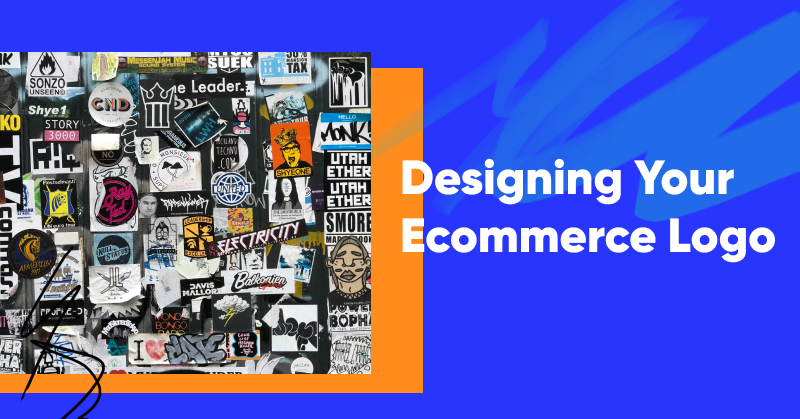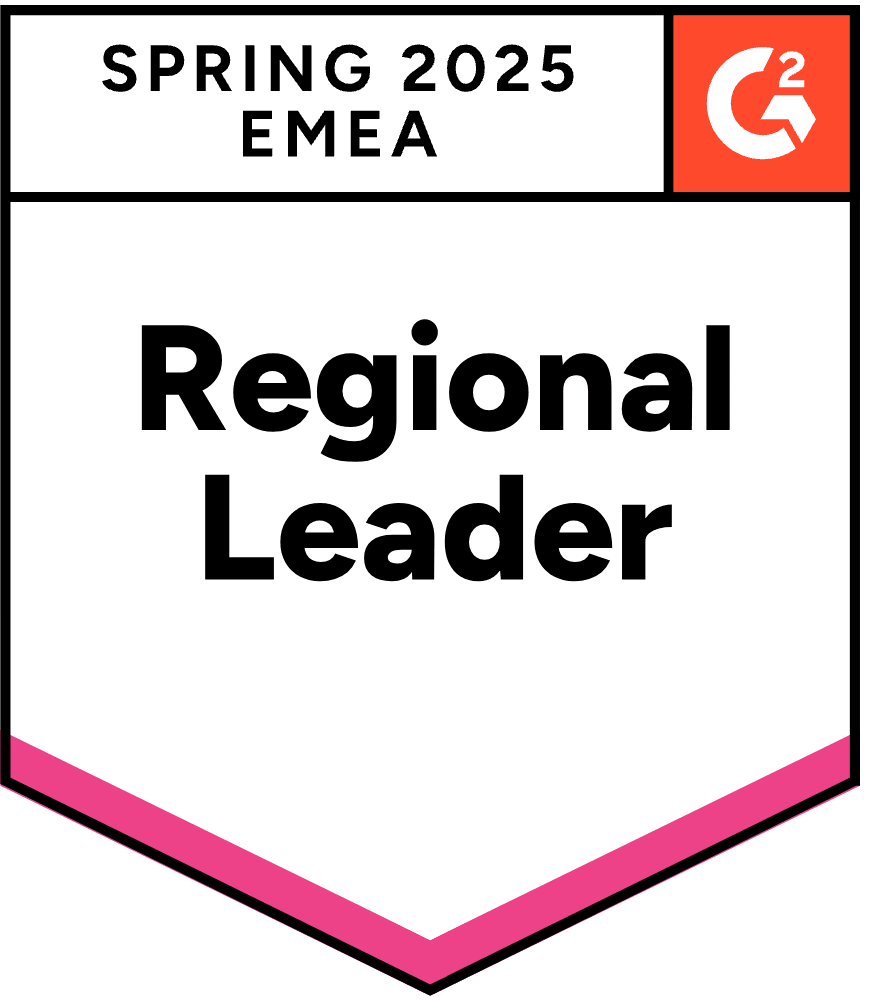Many people underestimate the importance of their ecommerce logo. Ecommerce logos seem so small and insignificant in the grand scheme of things.
The best logos are meant to be a quick, but full, representation of your brand. They can communicate a message about who you are, what you do, and what your values are.
How can all of this possibly be communicated in an ecommerce logo which typically has so few components? Well, each component of an ecommerce logo is meaningful.
Not only are ecommerce logos important to your business’s brand, but they can also have an impact on your conversion success. Conversion rate optimization and aesthetic graphic design are often seen as competing styles of web design, but using them together is an important aspect of ecommerce.
So before hiring a cheap designer or downloading a logo generator, read the following tips to find out how to create a meaningful ecommerce logo design that can help turn your website visitors into consumers.
Let’s jump in!
1. Style

The first thing you have to decide when designing your ecommerce logo is what style you would like to use. This is important to consider because different styles are useful for different media.
For example, a beautifully illustrated and detailed logo would look amazing on a storefront but if you’re creating an app, it wouldn’t reduce well to a thumbnail. While some styles are trendy, others are timeless and classic.
Minimalism has recently become increasingly popular in ecommerce logos and graphic design more broadly. Minimalism is great because the style is simple and clear, however, it can be more difficult to convey meaning when limiting your components.
Other styles you might consider for designing a logo are illustrative, pixelated, geometric, and abstract.
Choosing or changing your ecommerce logo style can be useful for improving sales and your website’s conversion rate.
This blog post uses case studies to demonstrate how using symmetry and clear, uncomplicated design can improve conversions. They concluded that a simple, symmetrical design is both more visually appealing to potential consumers and easier to navigate.
The rise of minimalism and its success has been demonstrated several times by the rebranding efforts of businesses like MasterCard and AirBnb.
The most notable thing about these examples is how they indicated their rebranding: a logo change. Logos are responsible for your business’ representation, thus setting the stage for what consumers can expect.

2. Font
The font you choose for your ecommerce logo design can align and reinforce your chosen style. It communicates a message about your ecommerce website and what you do. Brand identity and typography are closely related.
When choosing a font, there are a lot of components to consider such as originality, legibility, and message.
One of the early steps in this process is also selecting the appropriate names for your website. This goes hand in hand with your logo design and helps establish your brand’s identity.
According to a study by the New York Times, some fonts are perceived as being serious and factual while others are perceived as “fun”.
Knowing how each font is perceived by potential consumers is essential when deciding which you would like to represent your brand. Do you want your product to be perceived as youthful and silly or serious and professional?
Check out the examples below to see how fonts can affect your logo.




You can also use typography to indicate the importance or the intended message of a design. For a more friendly message, you can opt for a fun font.
If the font in your ecommerce logo is smaller than the featured icon, the icon will be seen as the most important. On the other hand, if your font is the largest part of your logo, what is written draws the attention of the viewer.
The size of the fonts also contributes to the legibility of your logo.
When it comes to conversions, clarity is key. If potential customers can’t understand the information given on your page, they can’t learn about the product or make a purchase!
Likewise, if when seeing your ecommerce logo, potential customers can’t understand your brand’s name, they’re unlikely to do more research.
3. Symbols
If you decide to include a symbol in your ecommerce logo, it should represent either your brand, your product, or both.
The shape and style of the symbols you include are just as significant as your business’ name. Even simple shapes convey messages.
Circles can be used to indicate time, continuity, and community.
Squares and rectangles are often associated with reliability and stability. The use of squares in a logo often goes unnoticed by its viewers, so it works well with minimalist ecommerce logos but it’s not as effective in attracting attention.
Triangles can vary in meaning based on their orientation; this potential for varied interpretations means that triangles can represent change and instability.
Using shapes consistently throughout your website and logos can create a recognizable brand. This can result in the association of certain shapes with your business and product!
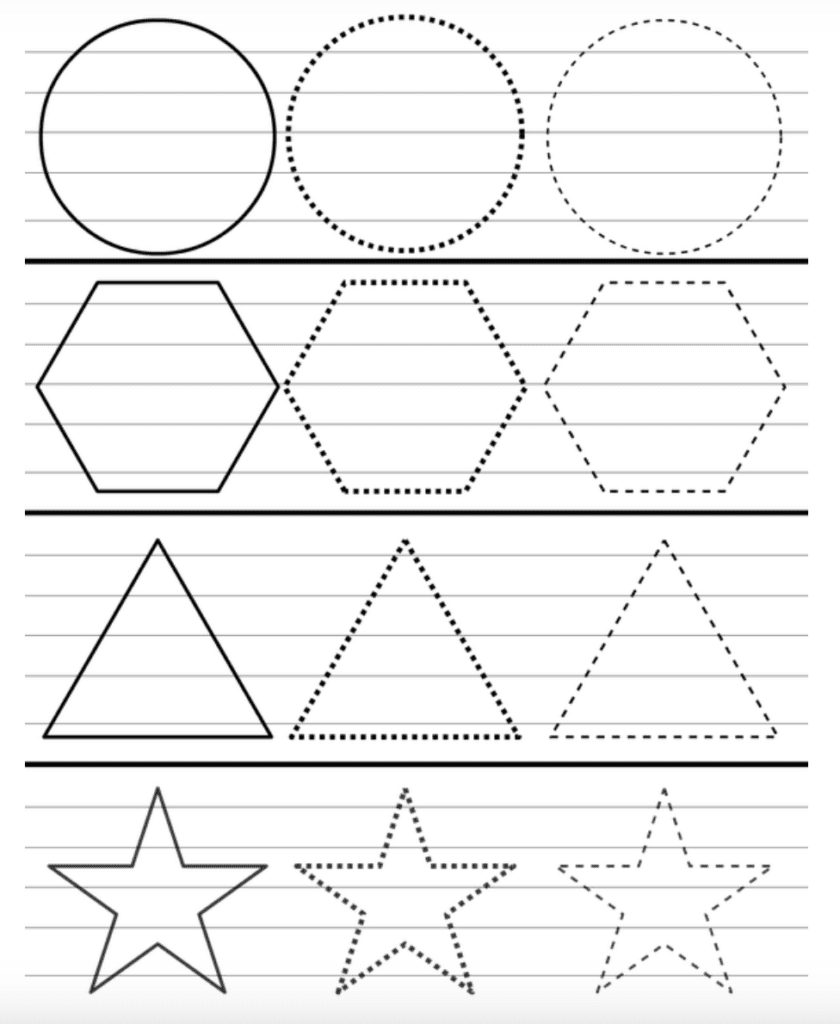
The importance of shapes translates over to other design elements on your website and conversion optimization as well.
Using triangles and arrows can direct your site visitors’ gaze. You can use your signature shapes to your advantage here by incorporating them into a call to action button.
Consider using shapes to your advantage when trying to draw attention to certain aspects of your business, whether that’s a purchase button or your brand identity.
4. Colors
Using the right colors in your ecommerce logo and overall branding is extremely important.
Kissmetrics created an excellent infographic about how color affects purchases.
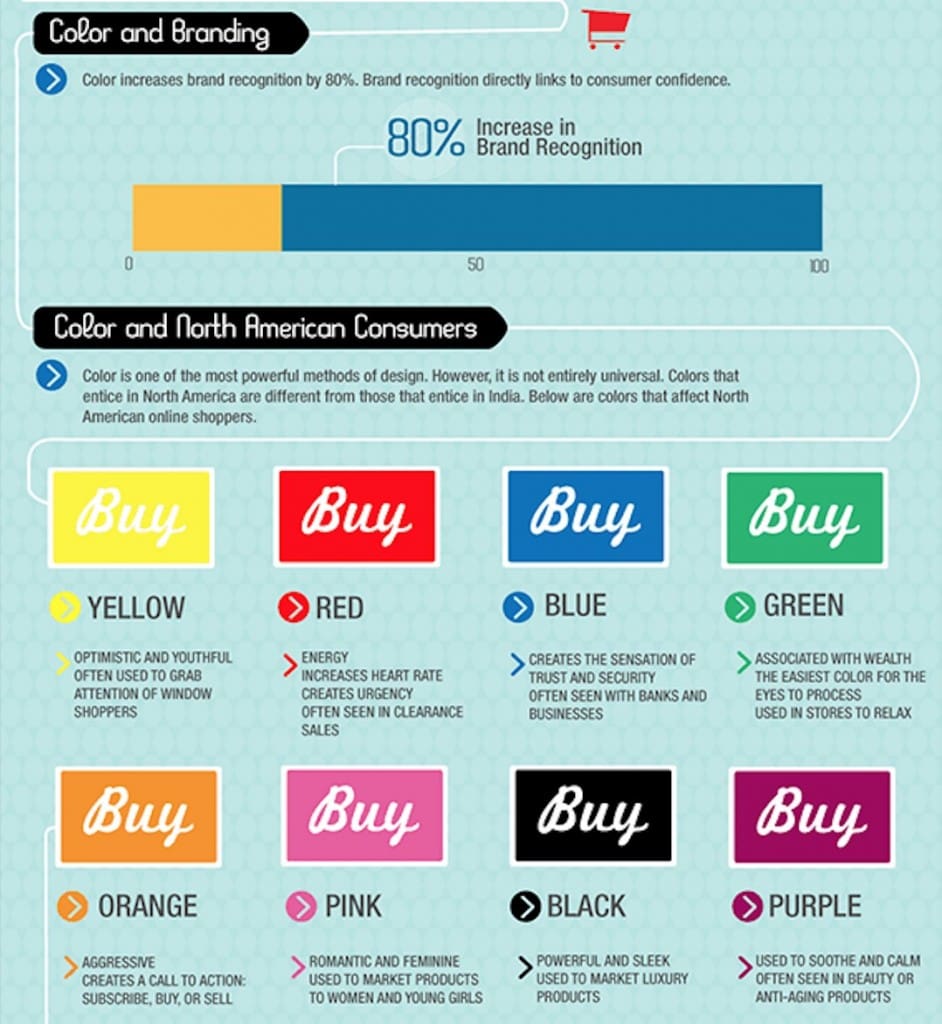
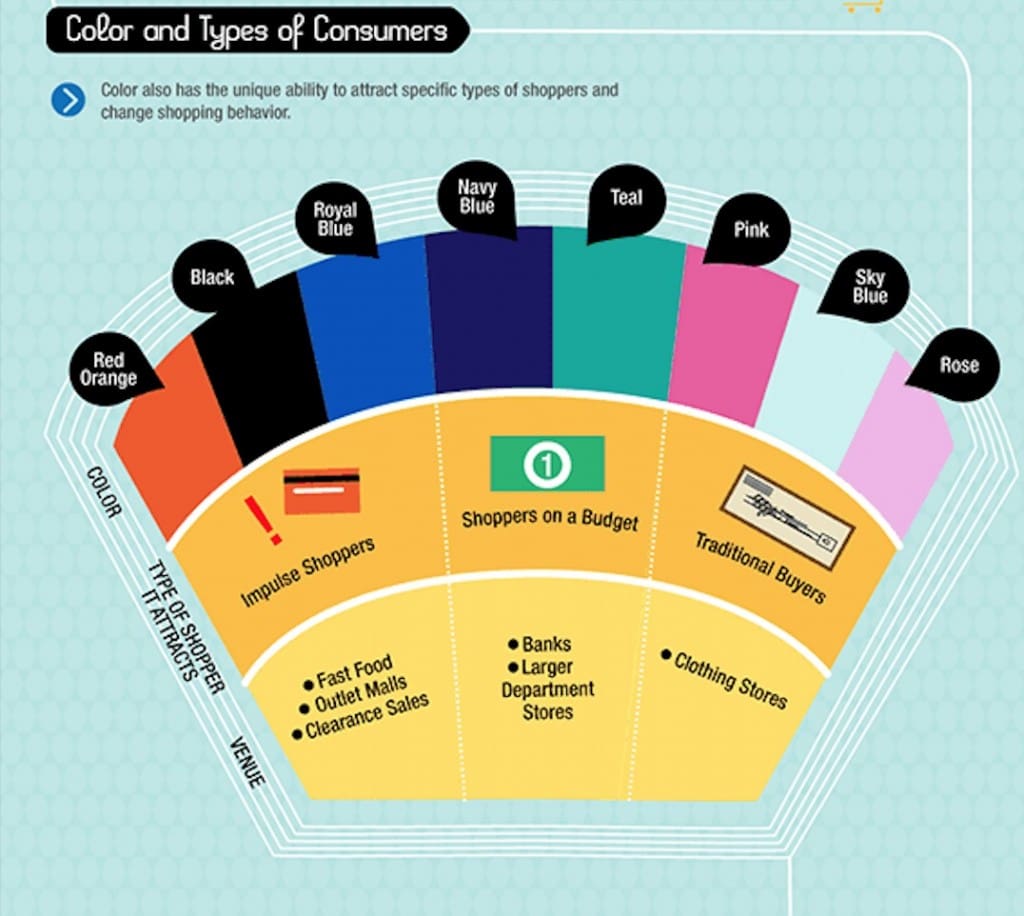
Each color is associated with different emotions and types of consumers.
Reds and oranges are frequently used in sales to entice impulse buyers. This is effective because red is shown to increase heart rate and heighten energy.
Blue, on the other hand, is associated with security and trust. This makes it an effective color for banks.
Green is easy for eyes to process; it’s often used in stores to help customers relax.
Black is used to indicate luxury and sophistication; it’s also a color that appeals to impulse buyers.
Knowing the different effects colors have on buying practices can help you design a product or ecommerce website that converts at higher rates.
It’s also important to consider how these color associations will affect your brand.
Kissmetrics found that in addition to affecting the way customers made purchases, the consistent use of colors increased brand recognition by 80%.
Your logo design is one of the easiest and most important ways you can establish your brand’s color scheme.
When choosing colors, consider carefully both how they will represent your values and how they will affect your consumers. Invision explains how using complementary, contrasting colors can improve conversion rates.
Style, font, symbols, and color are all essential branding elements to consider when designing a business’ logo. Not only do they contribute to your brand’s message, but they can increase your conversions.
Wrapping up
As you can see, the design of your ecommerce logo holds significant weight in shaping your brand identity and influencing consumer behavior. While it may seem like a small detail, a well-crafted ecommerce logo can communicate volumes about your values, mission, and identity in a matter of seconds.
The four key principles discussed—style, font, symbols, and colors—each play a crucial role in crafting an ecommerce logo that resonates with your audience and drives conversions.
By adhering to the principles outlined in this article and investing in thoughtful logo design, you can set your ecommerce website up for success in a competitive online landscape.
An ecommerce logo maker tool like Logojoy can help you create a new logo in under 10 minutes if your current logo needs an update. Changing your logo could mean a lot more for your business than simply a new icon!
This is a guest post from Alannah Alves, content marketing coordinator at Logojoy. Logojoy is a logo-design tool that uses artificial intelligence to create stunning, custom logos in under 10 minutes.
